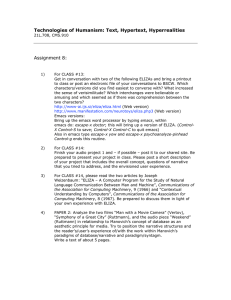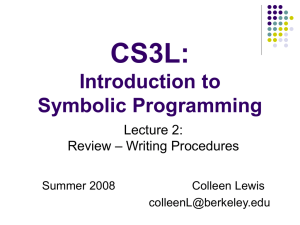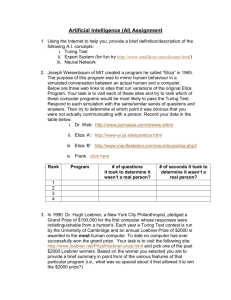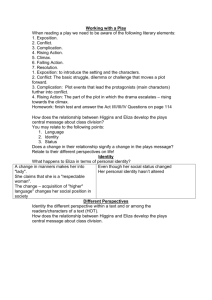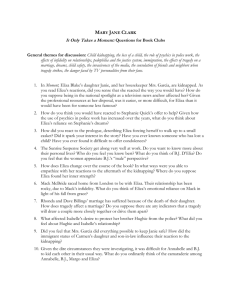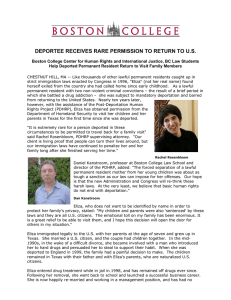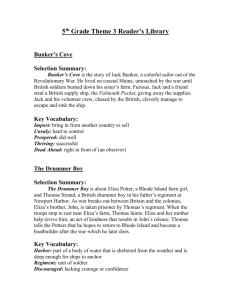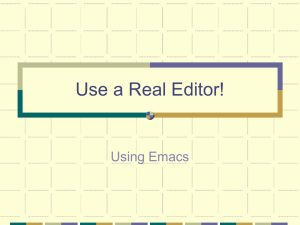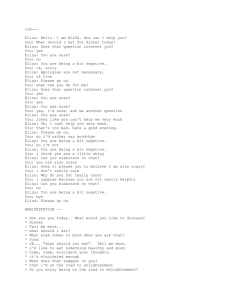Interactive and Non-Linear Narrative: Theory and Practice
advertisement
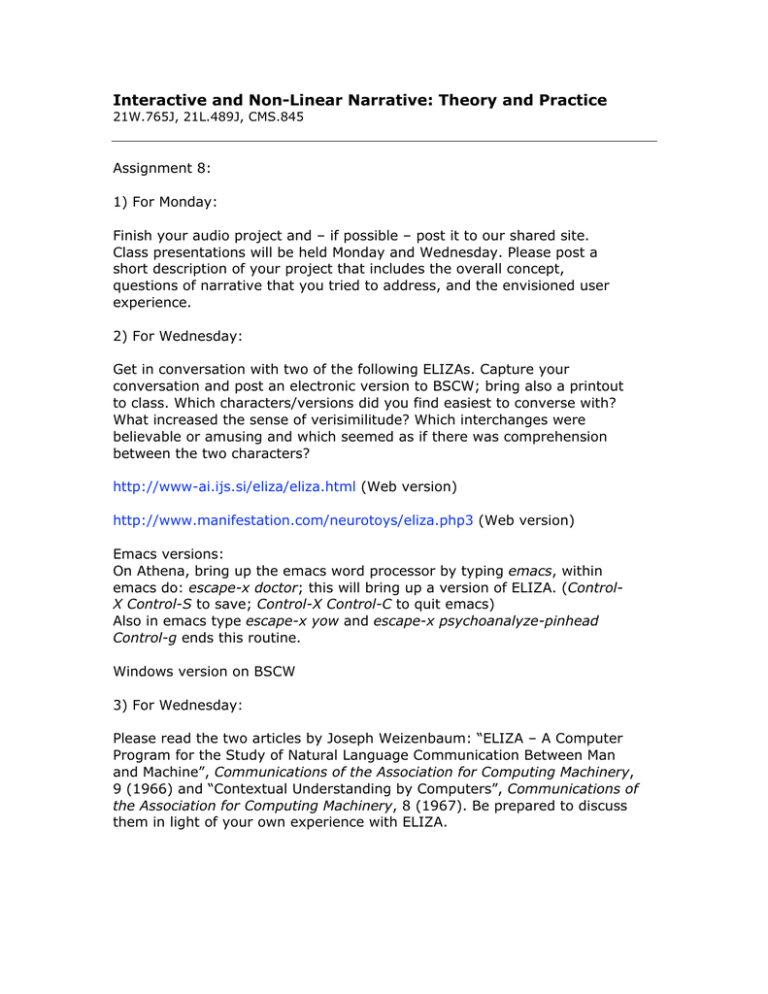
Interactive and Non-Linear Narrative: Theory and Practice 21W.765J, 21L.489J, CMS.845 Assignment 8: 1) For Monday: Finish your audio project and – if possible – post it to our shared site. Class presentations will be held Monday and Wednesday. Please post a short description of your project that includes the overall concept, questions of narrative that you tried to address, and the envisioned user experience. 2) For Wednesday: Get in conversation with two of the following ELIZAs. Capture your conversation and post an electronic version to BSCW; bring also a printout to class. Which characters/versions did you find easiest to converse with? What increased the sense of verisimilitude? Which interchanges were believable or amusing and which seemed as if there was comprehension between the two characters? http://www-ai.ijs.si/eliza/eliza.html (Web version) http://www.manifestation.com/neurotoys/eliza.php3 (Web version) Emacs versions: On Athena, bring up the emacs word processor by typing emacs, within emacs do: escape-x doctor; this will bring up a version of ELIZA. (ControlX Control-S to save; Control-X Control-C to quit emacs) Also in emacs type escape-x yow and escape-x psychoanalyze-pinhead Control-g ends this routine. Windows version on BSCW 3) For Wednesday: Please read the two articles by Joseph Weizenbaum: “ELIZA – A Computer Program for the Study of Natural Language Communication Between Man and Machine”, Communications of the Association for Computing Machinery, 9 (1966) and “Contextual Understanding by Computers”, Communications of the Association for Computing Machinery, 8 (1967). Be prepared to discuss them in light of your own experience with ELIZA.
